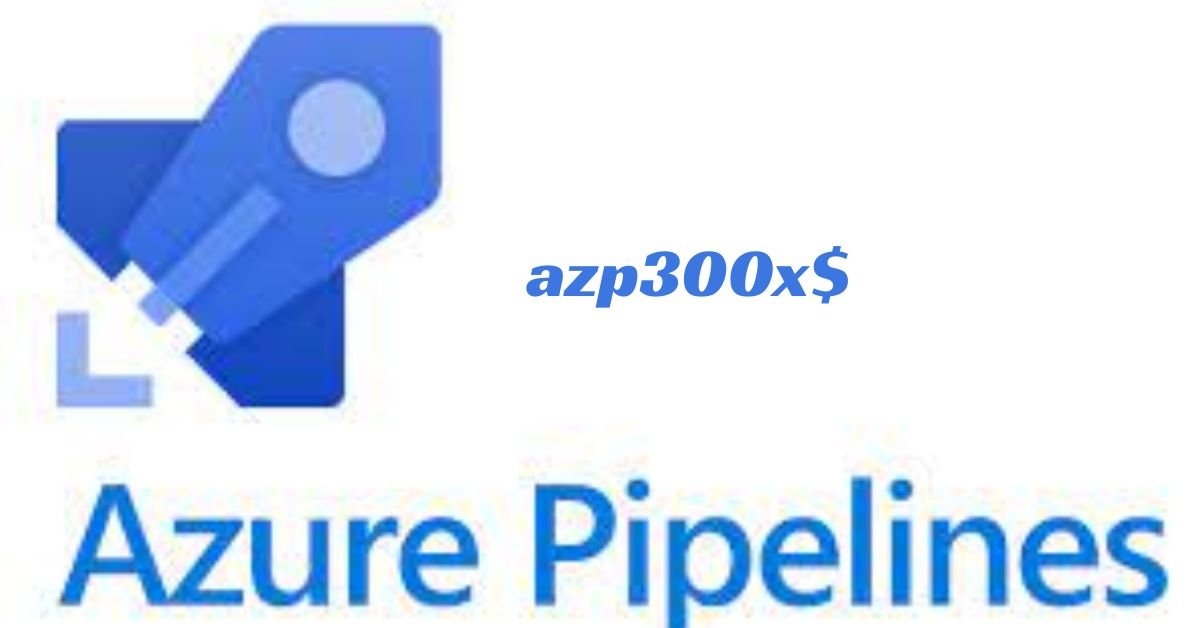Azure Pipelines, an integral part of the Azure DevOps suite, is a powerful tool that enables developers to automate their build, test, and deployment processes. With the introduction of azp300x$, Azure Pipelines has significantly enhanced its capabilities, making it a critical component for efficient Continuous Integration and Continuous Deployment (CI/CD). This article delves into the various aspects of $azp300x, providing insights into its features, configurations, and best practices.
Introduction to azp300x$
What is azp300x$?
azp300x$ is a set of advanced features and functionalities within Azure Pipelines that streamline CI/CD processes. These features enable teams to build, test, and deploy applications more efficiently and securely. Whether you are developing a small application or managing a complex microservices architecture, azp300x$ offers tools and integrations that cater to various needs.
Importance of azp300x$ in DevOps
In the dynamic world of DevOps, the need for reliable and scalable CI/CD pipelines cannot be overstated. azp300x$ addresses these requirements by providing robust automation tools, reducing manual intervention, and ensuring faster delivery cycles. This suite of features is designed to enhance productivity, improve code quality, and enable seamless collaboration across development and operations teams.
Evolution of azp300x$
Since its inception, Azure Pipelines has undergone several transformations. The introduction of azp300x$ marks a significant milestone, offering advanced capabilities that were previously unavailable or cumbersome to implement. This evolution reflects Microsoft’s commitment to providing cutting-edge tools that meet the evolving demands of modern software development and deployment.
Also Read: $nomeme Coin | TechTreesCoin
Getting Started with azp300x$
Prerequisites for azp300x$
To leverage the full potential of azp300x$, it is essential to have a foundational understanding of Azure DevOps and its components. Basic knowledge of Continuous Integration and Continuous Deployment (CI/CD) concepts, as well as familiarity with Azure Repos, is highly recommended. Additionally, having administrative access to your Azure DevOps organization and permissions to configure pipelines is crucial for setting up and managing azp300x$ features.
Setting Up Azure DevOps
Before diving into azp300x$, ensure that your Azure DevOps environment is properly set up. Start by creating an Azure DevOps organization, if you haven’t already. Navigate to the Azure DevOps portal and sign in with your Microsoft account. Once logged in, you can create a new organization or select an existing one.
Next, create a new project within your organization. This project will serve as the central hub for managing your source code, pipelines, and other DevOps artifacts. Configure the project settings according to your team’s requirements, ensuring that necessary permissions and access controls are in place.
Installing and Configuring azp300x$
To install azp300x$, navigate to the Azure Pipelines section within your project. Here, you can create a new pipeline or modify an existing one. azp300x$ features can be accessed through the pipeline configuration interface, where you can enable and customize various settings to suit your CI/CD workflows.
Begin by selecting the appropriate source repository for your pipeline. Azure Pipelines supports a wide range of repositories, including Azure Repos, GitHub, Bitbucket, and others. Once the source repository is linked, configure the pipeline stages, specifying the build, test, and deployment steps required for your application.
azp300x$ provides advanced options for customizing your pipelines, such as defining environment variables, managing secrets, and setting up conditional workflows. These features allow you to create dynamic and flexible pipelines that can adapt to different scenarios and environments.
Core Features of azp300x$
CI/CD Pipeline Management
One of the core strengths of azp300x$ is its comprehensive pipeline management capabilities. azp300x$ enables teams to automate the entire CI/CD process, from code commits to production deployments. This automation reduces manual intervention, minimizes errors, and ensures consistent and reliable software delivery.
azp300x$ supports both YAML and classic pipeline definitions. YAML pipelines offer a code-centric approach, allowing you to define your pipeline as code within your source repository. Classic pipelines, on the other hand, provide a graphical interface for configuring pipeline stages and tasks. Both approaches have their advantages, and azp300x$ allows you to choose the one that best fits your team’s workflow.
Integration with Azure Repos
Azure Repos is a critical component of Azure DevOps, providing a robust source control solution for managing your codebase. azp300x$ seamlessly integrates with Azure Repos, enabling you to trigger pipeline runs based on code commits, pull requests, and branch policies. This integration ensures that your CI/CD workflows are tightly coupled with your version control practices, promoting a consistent and reliable development process.
Automated Testing and Deployment
Automated testing is a crucial aspect of any CI/CD pipeline. azp300x$ supports a wide range of testing frameworks and tools, allowing you to incorporate unit tests, integration tests, and end-to-end tests into your pipeline. By automating the testing process, azp300x$ helps identify issues early in the development cycle, reducing the risk of defects reaching production.
Deployment automation is another key feature of azp300x$. With deployment tasks and templates, you can automate the deployment of your applications to various environments, including development, staging, and production. azp300x$ supports deployment to Azure services such as Azure App Service, Azure Kubernetes Service (AKS), and Azure Functions, as well as other cloud and on-premises environments.
Advanced Configuration in $azp300x
Customizing Pipelines
$azp300x offers extensive customization options for tailoring your pipelines to meet specific requirements. You can define custom pipeline stages, tasks, and conditions, enabling you to create complex workflows that address unique scenarios. Custom scripts and tools can also be integrated into your pipeline, providing additional flexibility and control over the CI/CD process.
Environment Variables and Secrets Management
Managing environment variables and secrets is critical for maintaining secure and reliable pipelines. $azp300x provides built-in support for managing these sensitive configurations. Environment variables can be defined at the pipeline level, allowing you to configure settings that are shared across multiple stages. Secrets, such as API keys and credentials, can be securely stored in Azure Key Vault and accessed by your pipeline during runtime.
YAML vs. Classic Pipelines
Choosing between YAML and classic pipelines depends on your team’s preferences and workflow requirements. YAML pipelines offer a declarative approach, allowing you to define your pipeline as code within your source repository. This approach promotes versioning and collaboration, as pipeline definitions are stored alongside your application code. Classic pipelines provide a visual interface for configuring pipeline stages and tasks, making them more accessible for users who prefer a graphical approach.
Security and Compliance
Ensuring Security in Pipelines
Security is a top priority in any CI/CD pipeline. $azp300x includes several features designed to enhance pipeline security, such as secure file handling, secret management, and identity and access management (IAM) controls. By implementing these security measures, you can protect your codebase and deployment environments from unauthorized access and potential threats.
Compliance with Industry Standards
Compliance with industry standards and regulations is essential for many organizations. $azp300x provides tools and features that help ensure your CI/CD pipelines meet these requirements. For example, you can implement audit trails, enforce code quality gates, and configure pipeline policies to maintain compliance with standards such as ISO, GDPR, and HIPAA.
Auditing and Monitoring Pipelines
Monitoring and auditing your pipelines is crucial for maintaining visibility and accountability. $azp300x offers comprehensive logging and reporting capabilities, allowing you to track pipeline execution, identify issues, and analyze performance metrics. These insights can help you optimize your CI/CD processes and ensure they align with your organization’s goals and standards.
$azp300x in Real-World Scenarios
Case Study: Enterprise Application Deployment
Consider a large enterprise that needs to deploy a complex application across multiple environments. $azp300x enables the organization to automate the entire deployment process, from code integration to production rollout. By defining environment-specific configurations and deployment tasks, the organization can ensure consistent and reliable deployments across development, staging, and production environments.
Case Study: Microservices Architecture
In a microservices architecture, managing the CI/CD process for multiple services can be challenging. $azp300x simplifies this by allowing teams to define individual pipelines for each microservice, while still enabling centralized management and monitoring. This approach ensures that each microservice can be independently developed, tested, and deployed, promoting agility and scalability.
Best Practices for Scalability and Performance
To achieve optimal scalability and performance, it is important to follow best practices when configuring your $azp300x pipelines. These practices include optimizing build and test stages, minimizing dependencies, and using parallel execution for tasks. By implementing these strategies, you can reduce pipeline execution times and improve the overall efficiency of your CI/CD process.
Integrations and Extensions
Extending $azp300x with Marketplace Extensions
Azure DevOps Marketplace offers a wide range of extensions that can enhance the functionality of $azp300x. These extensions provide additional tools, tasks, and integrations that can be easily added to your pipelines. Whether you need advanced testing frameworks, deployment tools, or monitoring solutions, the Marketplace has a variety of options to choose from.
Integration with Third-Party Tools
$azp300x supports integration with numerous third-party tools, enabling you to extend your CI/CD workflows beyond Azure DevOps. For example, you can integrate with popular tools such as Jenkins, GitHub Actions, and Docker to create a seamless and comprehensive DevOps ecosystem. These integrations provide additional flexibility and allow you to leverage existing tools and workflows within your organization.
Custom Scripts and Tools
In addition to pre-built extensions and integrations, $azp300x allows you to incorporate custom scripts and tools into your pipelines. Whether you need to run custom build scripts, deploy applications using proprietary tools, or perform specialized tasks, $azp300x provides the flexibility to include these customizations in your CI/CD process.
Troubleshooting and Optimization
Common Issues and Solutions
Despite the robustness of $azp300x, issues may arise during pipeline execution. Common problems include failed builds, test errors, and deployment failures. To address these issues, it is important to implement proper error handling, logging, and notifications within your pipelines. $azp300x provides tools for diagnosing and resolving these issues, ensuring that your CI/CD process remains reliable and efficient.
Performance Tuning for Pipelines
Optimizing the performance of your pipelines is crucial for maintaining efficiency and reducing execution times. $azp300x offers several strategies for performance tuning, such as caching dependencies, parallelizing tasks, and optimizing resource utilization. By implementing these strategies, you can significantly improve the speed and efficiency of your CI/CD workflows.
Optimizing Build and Release Processes
Effective build and release processes are essential for delivering high-quality software. $azp300x provides tools for optimizing these processes, including incremental builds, artifact management, and release orchestration. By refining your build and release workflows, you can ensure that your applications are consistently built, tested, and deployed in a timely manner.
Future of $azp300x
Upcoming Features and Updates
The landscape of CI/CD and DevOps is constantly evolving, and $azp300x is no exception. Microsoft regularly releases updates and new features to enhance the capabilities of Azure Pipelines. Staying informed about these updates is crucial for leveraging the latest tools and technologies in your CI/CD workflows.
Trends in CI/CD and DevOps
The field of CI/CD and DevOps continues to evolve, with emerging trends such as DevSecOps, AI-driven automation, and continuous everything (CX). Understanding these trends and their implications can help you stay ahead of the curve and ensure that your CI/CD processes remain cutting-edge and competitive.
How to Stay Updated
To stay updated on the latest developments in $azp300x and Azure Pipelines, it is important to follow official Microsoft channels, such as the Azure DevOps blog, documentation, and community forums. Additionally, participating in industry conferences, webinars, and training programs can provide valuable insights and knowledge.
FAQs about $azp300x
What is $azp300x in Azure Pipelines? $azp300x is a set of advanced features within Azure Pipelines that enhance CI/CD processes, offering robust automation and integration capabilities.
How do I set up $azp300x in my Azure DevOps environment? To set up $azp300x, ensure you have the necessary prerequisites, configure your Azure DevOps organization and project, and then install and configure $azp300x within your pipelines.
What are the benefits of using $azp300x for CI/CD? $azp300x offers several benefits, including automated testing and deployment, integration with Azure Repos, advanced pipeline customization, and robust security and compliance features.
Can $azp300x be integrated with third-party tools? Yes, $azp300x supports integration with a wide range of third-party tools, including Jenkins, GitHub Actions, Docker, and more.
How can I troubleshoot issues in my azp300x$ pipelines? To troubleshoot issues, implement proper error handling, logging, and notifications within your pipelines. Utilize the diagnostic tools provided by azp300x$ to identify and resolve common problems.
What are some best practices for optimizing azp300x$ pipelines? Best practices for optimizing azp300x$ pipelines include caching dependencies, parallelizing tasks, optimizing resource utilization, and refining build and release workflows.
Conclusion
azp300x$ in Azure Pipelines represents a significant advancement in CI/CD automation and DevOps practices. By leveraging its comprehensive features, robust security, and seamless integrations, teams can achieve efficient and reliable software delivery. Whether you are new to Azure Pipelines or looking to enhance your existing workflows, azp300x$ provides the tools and capabilities needed to succeed in today’s fast-paced development environment.




